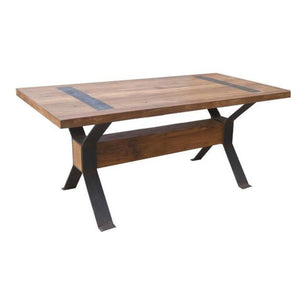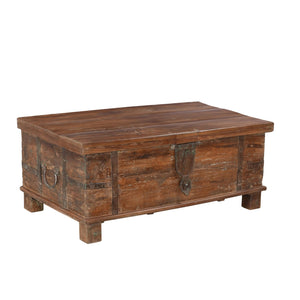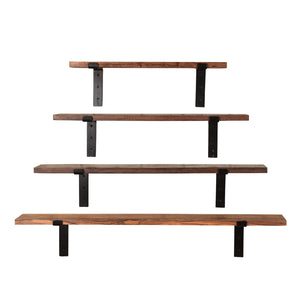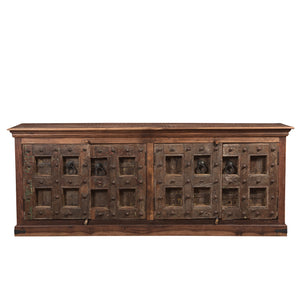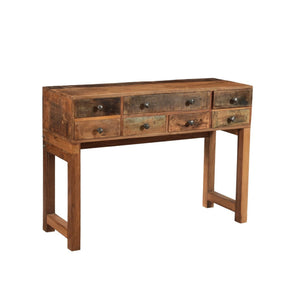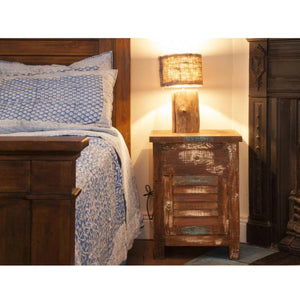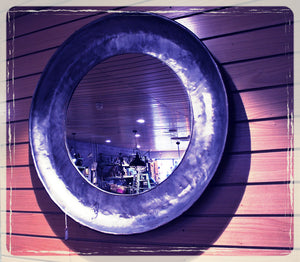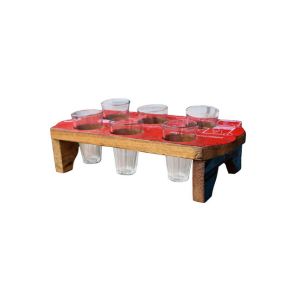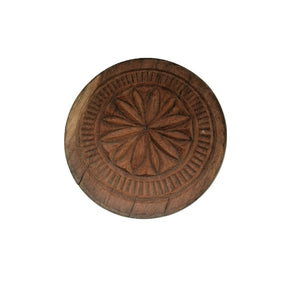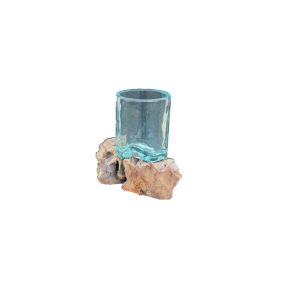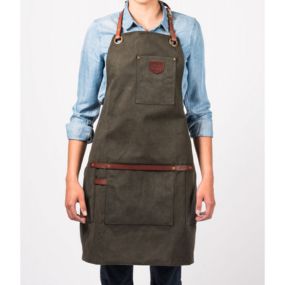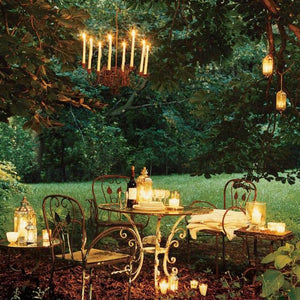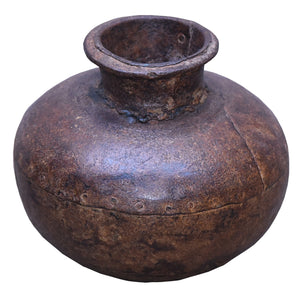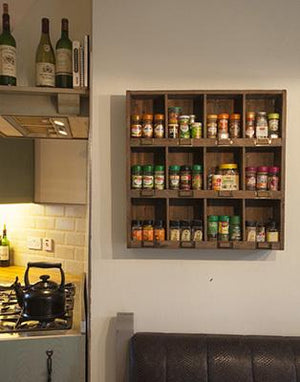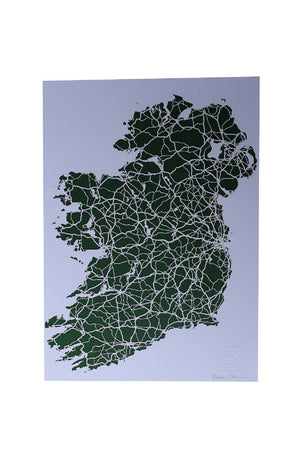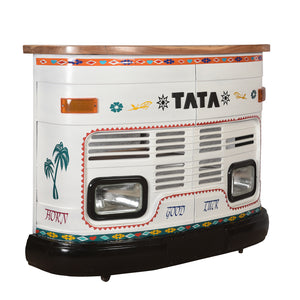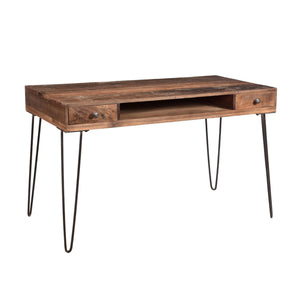Getting A Rustic Dining Table For Your Kitchen - A Guide For The Eco Customer
Furnishing your home can be an arduous task, especially when looking for ethically made and environmentally sustainable furniture within budget. As you go about decorating your home, you may decide on a particular style and find ways to introduce that style throughout.
It is ideal to be consistent with one specific style and try to find furniture pieces that will work for you and work well in your home, then start mixing designs and styles from that base point. One style in particular that complements eco-friendly furnishings due to its encouragement of natural and organic textures, distressed details, raw finishes, and casual design is rustic decor.
Rustic decor gives off the essence of a time when things were simple, honest, and human-made furniture superseded mass-produced pieces. It proves the adage that everything comes full circle. Rustic decor is a style on its own but is also broad enough that it complements many other styles: farmhouse, vintage, coastal and country style décor; just to name a few.
This guide intends to demystify the process of sourcing beautiful, rustic furnishings that are eco-friendly, sustainable, and ethical. It is imperative our furniture, especially our kitchen and dining tables, are not hazardous to our health. After all, a lot of time is spent eating and entertaining at our kitchen tables.
Materials:
Look for rustic dining tables with low or no environmental impact in terms of sourcing. Most rustic tables feature wood construction with minimal to no additional manufacturing processes. The wood is in its natural state, rough and aged to show; the design is never perfect but the piece is durable and well-constructed. Source kitchen tables with salvaged (e.g. from fallen trees), reclaimed (e.g. from old barns or gym floors) or FSC-certified wood.
Production Methods:
A minimal to zero carbon footprint usually comes in the form of handcrafted and reclaimed pieces. It requires much less energy and resources to upcycle and restore an existing piece of furniture rather than source materials and produce a new piece of furniture. As well, as making sure the company uses fair trade practices with a positive or neutral social impact.
Finishes:
Some conscious restorers use glues, paints and finishes that are low- or no-VOC, meaning they release minimal or no unstable toxic chemicals into your home. Look for restorers with a commitment to using low or nontoxic ingredients with minimal or no off-gassing of harmful fumes from finishes. The beauty of rustic décor is that the pieces are usually raw. If they have a finish applied, it is generally natural and water-based, allowing for safety and eco-friendliness.
Life cycle:
Reclaimed dining tables work to extend the life cycles of furniture pieces. Extending the dining table's life cycle is as easy as reusing components and upcycling furniture to give them new life. However, as decor trends change over time, it may be tempting to want to refresh rooms with new furniture. An excellent way to extend the life cycles of reclaimed pieces and refresh your space keeps the larger furniture pieces and updates or restores seating or accessories. These small changes will breathe new life into your dining space while still being sustainable.
In short…
1) Find quality, reclaimed pieces made of real wood
2) Seek out low or no-VOC finishes
3) Extend the life cycle of larger pieces by refurbishing it with different components, finishes, materials to update its look after years of use.
It is ideal to be consistent with one specific style and try to find furniture pieces that will work for you and work well in your home, then start mixing designs and styles from that base point. One style in particular that complements eco-friendly furnishings due to its encouragement of natural and organic textures, distressed details, raw finishes, and casual design is rustic decor.
Rustic decor gives off the essence of a time when things were simple, honest, and human-made furniture superseded mass-produced pieces. It proves the adage that everything comes full circle. Rustic decor is a style on its own but is also broad enough that it complements many other styles: farmhouse, vintage, coastal and country style décor; just to name a few.
This guide intends to demystify the process of sourcing beautiful, rustic furnishings that are eco-friendly, sustainable, and ethical. It is imperative our furniture, especially our kitchen and dining tables, are not hazardous to our health. After all, a lot of time is spent eating and entertaining at our kitchen tables.
Materials:
Look for rustic dining tables with low or no environmental impact in terms of sourcing. Most rustic tables feature wood construction with minimal to no additional manufacturing processes. The wood is in its natural state, rough and aged to show; the design is never perfect but the piece is durable and well-constructed. Source kitchen tables with salvaged (e.g. from fallen trees), reclaimed (e.g. from old barns or gym floors) or FSC-certified wood.
Production Methods:
A minimal to zero carbon footprint usually comes in the form of handcrafted and reclaimed pieces. It requires much less energy and resources to upcycle and restore an existing piece of furniture rather than source materials and produce a new piece of furniture. As well, as making sure the company uses fair trade practices with a positive or neutral social impact.
Finishes:
Some conscious restorers use glues, paints and finishes that are low- or no-VOC, meaning they release minimal or no unstable toxic chemicals into your home. Look for restorers with a commitment to using low or nontoxic ingredients with minimal or no off-gassing of harmful fumes from finishes. The beauty of rustic décor is that the pieces are usually raw. If they have a finish applied, it is generally natural and water-based, allowing for safety and eco-friendliness.
Life cycle:
Reclaimed dining tables work to extend the life cycles of furniture pieces. Extending the dining table's life cycle is as easy as reusing components and upcycling furniture to give them new life. However, as decor trends change over time, it may be tempting to want to refresh rooms with new furniture. An excellent way to extend the life cycles of reclaimed pieces and refresh your space keeps the larger furniture pieces and updates or restores seating or accessories. These small changes will breathe new life into your dining space while still being sustainable.
In short…
1) Find quality, reclaimed pieces made of real wood
2) Seek out low or no-VOC finishes
3) Extend the life cycle of larger pieces by refurbishing it with different components, finishes, materials to update its look after years of use.













